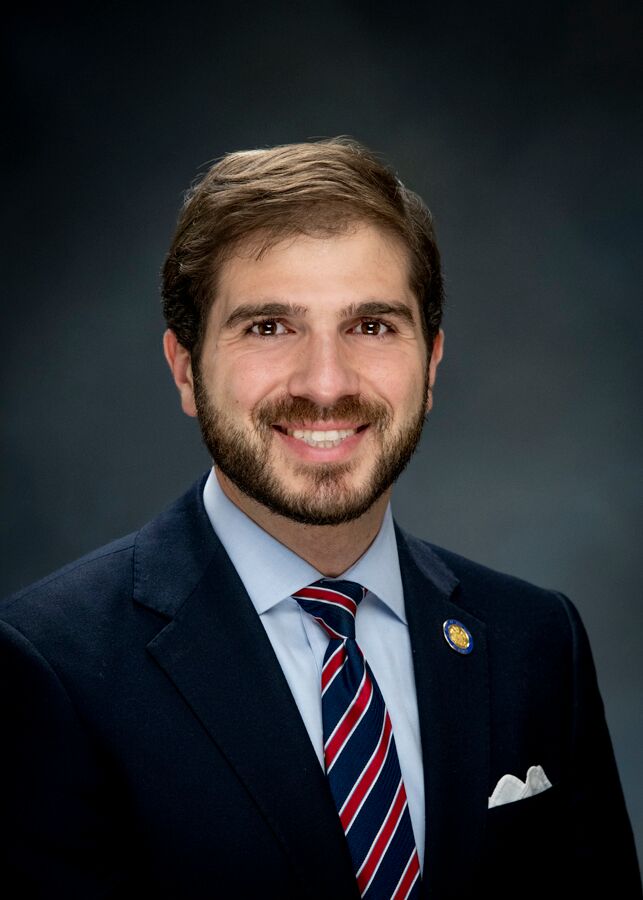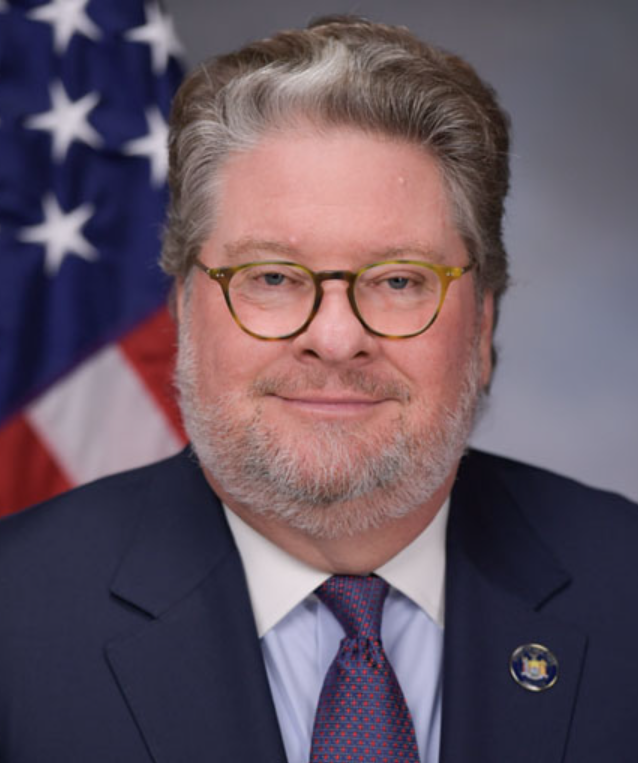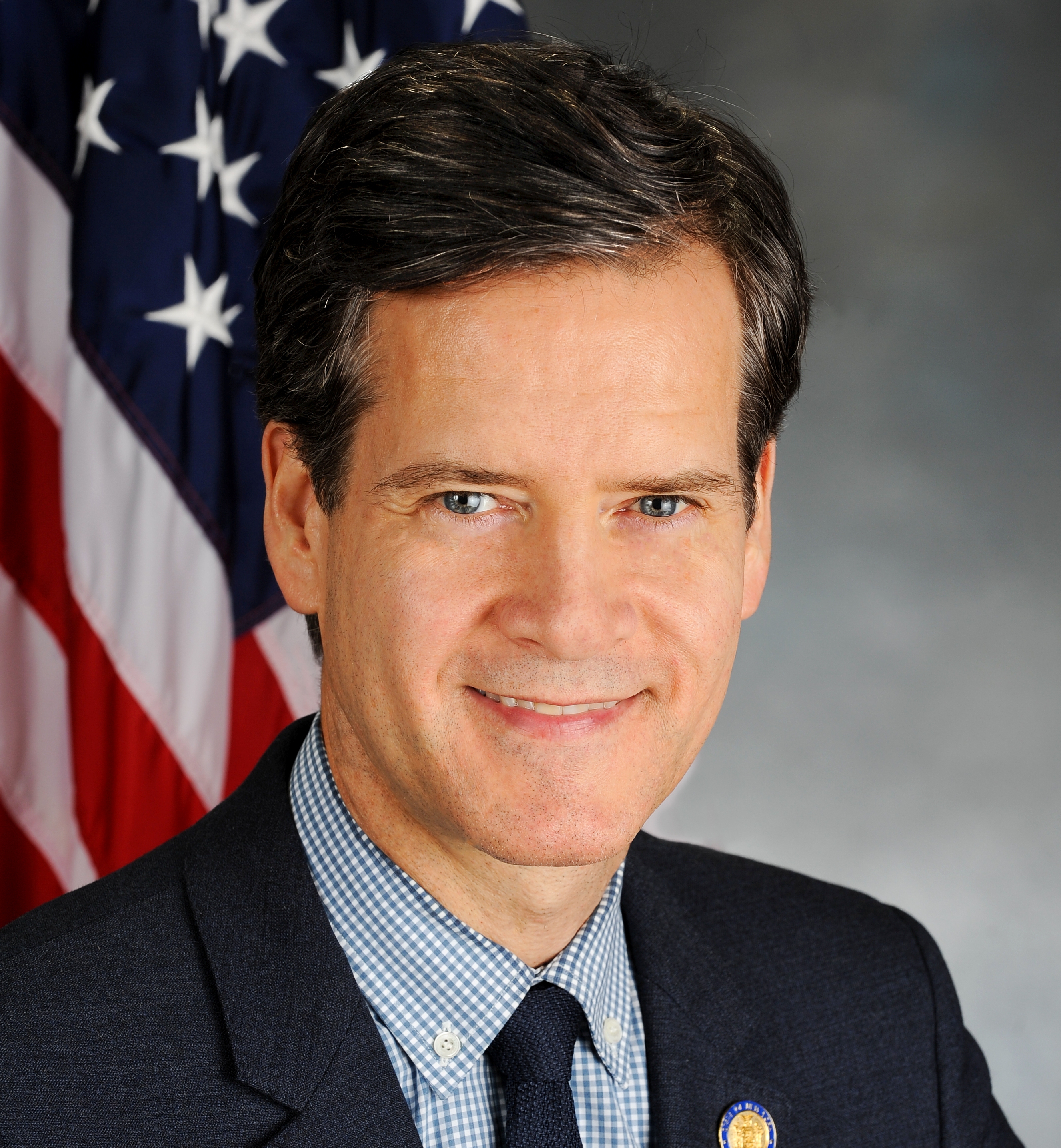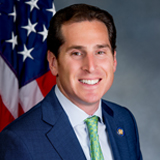S T A T E O F N E W Y O R K
________________________________________________________________________
717
2021-2022 Regular Sessions
I N S E N A T E
(PREFILED)
January 6, 2021
___________
Introduced by Sens. GOUNARDES, HARCKHAM, HOYLMAN, KAMINSKY -- read twice
and ordered printed, and when printed to be committed to the Committee
on Transportation
AN ACT to amend the vehicle and traffic law, the insurance law, the
penal law, the uniform district court act, and the administrative code
of the city of New York, in relation to redefining reckless driving as
dangerous driving
THE PEOPLE OF THE STATE OF NEW YORK, REPRESENTED IN SENATE AND ASSEM-
BLY, DO ENACT AS FOLLOWS:
Section 1. Legislative intent. The Legislature recognizes the height-
ened responsibility of operating a multi-ton car or truck and that such
motor vehicle is a dangerous instrument under state law that, in an
instant, can cause lethal physical harm. For example, when operating a
car at 30 miles per hour the average risk of a pedestrian dying upon
impact with such car is 40%, at 40 miles per hour the risk of death is
80%, and at speeds greater than 50 miles per hour the likelihood of
death is near certain at nearly 100%.
When deaths resulting from alcohol-impaired driving were reduced from
approximately 30,000 annually in the early 1980s across the United
States to approximately 10,000 annually in recent years, that remarkable
reduction was achieved in part by the certainty experienced by drivers
that they would suffer legal consequences for driving impaired and risk-
ing the lives of themselves and others, resulting from changes in laws
prohibiting impaired driving. However, that certainty does not exist for
other types of dangerous driving. A 2016 survey by the National Safety
Council showed that "[a]lthough 83% of drivers surveyed believe driving
is a safety concern, a startling number say they are comfortable speed-
ing (64%) [and] texting either manually or through voice controls
(47%)," whereas far fewer (10%) say they are comfortable driving after
they feel they've had too much alcohol. This shows that, while drunk
EXPLANATION--Matter in ITALICS (underscored) is new; matter in brackets
[ ] is old law to be omitted.
LBD01696-01-1
S. 717 2
driving has become socially unacceptable, most other forms of dangerous
driving have not, and New Yorkers are paying the price with lives lost
and bodies and families shattered. Moreover, the New York City Depart-
ment of Transportation estimated in 2010 that the annual cost of all
traffic crashes just in New York City to be $4.29 billion annually,
about 1% of the Gross City Product.
As evidenced by our country's experience combatting drunk driving,
research has shown that perceived certainty of legal consequences is
necessary to deter or prevent harmful acts, including dangerous driving.
The original statutory language of the New York vehicle and traffic law
section 1212 (VTL 1212), in and of itself, is favorable to a reasonable
standard for reckless or dangerous driving, specifying that driving in a
manner that "unreasonably interferes with" or "unreasonably endangers
[others]" constitutes a violation of that section and is an unclassified
misdemeanor. However, that reasonableness standard has subsequently been
heightened, to an extreme level by New York judicial interpretations
that require factors such as a finding of seriously blameworthy conduct
(People v. Boutin and People v. Cabrera), an "affirmative act" by the
driver (People v. Cabrera), a "gross deviation" from the standard of
conduct a reasonable person would observe, and additional "aggravating
factors" on behalf of the driver -- all judicial interpretations and
elevated mens rea requirements not required by the original statutory
text for vehicle and traffic law section 1212 Reckless Driving. This
judicially imposed higher mens rea requirement fails to recognize the
awesome responsibility that operating a multi-ton car or truck is and as
a consequence, evidenced in part by the staggering injuries and deaths
in our state, the statute has failed to achieve what it intended. Cars
and trucks are dangerous instruments under state law and should be
recognized as such when applying vehicle and traffic law section 1212.
For these reasons the Legislature is disapproving of the holdings with
regards to a motor vehicle operator's culpability and state of mind in
People v. Boutin, 75 N.Y.2d 692 (N.Y. 1990); People v. Grogan, 260 N.Y.
138, 183 N.E. 273 (N.Y. 1932); People v. Cabrera, 10 N.Y.3d 370 (N.Y.
2008) and People v. Goldblatt, 98 A.D.3.d 817 N.Y.S.2d 210 (3d Dept.
2012); and this legislation would correct the misapplication of vehicle
and traffic law section 1212 in these rulings and restore the statute to
its original intent, namely to deter and prevent dangerous operation of
heavy motor vehicles that pose a daily threat to public health and risk
the lives of New Yorkers throughout our state.
§ 2. Section 1212 of the vehicle and traffic law, as added by chapter
47 of the laws of 1988, is amended to read as follows:
§ 1212. [Reckless] DANGEROUS driving. [Reckless] DANGEROUS driving
shall mean [driving] OPERATING or using any motor vehicle, motorcycle or
any other vehicle CAPABLE ONLY OF BEING propelled by any power other
than muscular power or any appliance or accessory thereof in a manner
which unreasonably interferes with the free and [proper] SAFE use of the
public highway, [or] unreasonably endangers users of the public highway,
OR FAILS TO EXERCISE ORDINARY DUE CARE. [Reckless] DANGEROUS driving is
prohibited. Every person violating this provision shall be guilty of a
misdemeanor. NOTWITHSTANDING ANY OTHER PROVISION OF THIS CHAPTER OR THE
PENAL LAW, EVERY PERSON VIOLATING THIS SECTION AND WHO CAUSES PHYSICAL
INJURY TO ANOTHER PERSON SHALL BE FOUND TO HAVE ACTED WITH CRIMINAL
NEGLIGENCE UNDER SECTION 15.05 OF THE PENAL LAW AND SHALL BE GUILTY OF A
CLASS A MISDEMEANOR. A VIOLATION OF THIS SECTION DOES NOT REQUIRE A
FINDING OF A MINIMUM NUMBER OF VIOLATIONS OF LAW OR A FINDING THAT A
S. 717 3
PERSON WAS AWARE OF, HAD PERCEIVED, OR HAD CREATED THE RISK OF HARM TO
ANOTHER PERSON.
§ 3. Section 509-e of the vehicle and traffic law, as amended by chap-
ter 853 of the laws of 1975, is amended to read as follows:
§ 509-e. Annual review of driving record. Each motor carrier shall, at
least once every twelve months, review the driving record of each bus
driver it employs to determine whether that driver meets minimum
requirements for safe driving and is qualified to drive a bus pursuant
to section five hundred nine-b of this article. In reviewing a driving
record, the motor carrier must consider any evidence that the bus driver
has violated applicable provisions of the vehicle and traffic law. The
motor carrier must also consider the driver's accident record and any
evidence that the driver has violated laws governing the operation of
motor vehicles, such as speeding, [reckless] DANGEROUS driving, and
operating while under the influence of alcohol or drugs, that indicate
that the driver has exhibited a disregard for the safety of the public.
Such information shall be recorded in the employer's record.
§ 4. Subparagraph (ii) of paragraph (a) of subdivision 4 of section
510-a of the vehicle and traffic law, as amended by section 1 of part C
of chapter 58 of the laws of 2013, is amended to read as follows:
(ii) is defined as reckless OR DANGEROUS driving by state or local law
or regulation;
§ 5. Paragraph 10 of subdivision (c) of section 516-b of the vehicle
and traffic law, as added by chapter 731 of the laws of 1986 and as
renumbered by chapter 298 of the laws of 1991, is amended to read as
follows:
(10) [Reckless] DANGEROUS driving; and
§ 6. Subdivision 2 of section 530 of the vehicle and traffic law, as
separately amended by chapters 571 and 732 of the laws of 2006, is
amended to read as follows:
(2) Such license or privilege shall not be issued to a person who,
within the four year period immediately preceding the date of applica-
tion, has been convicted within or without the state of homicide or
assault arising out of the operation of a motor vehicle, of criminally
negligent homicide or criminal negligence in the operation of a motor
vehicle resulting in death, or has been convicted within the state of a
violation of subdivision two of section six hundred of this chapter or
of [reckless] DANGEROUS driving. Such license or privilege shall not be
issued to a person whose license or privilege, at the time of applica-
tion, is revoked pursuant to the provisions of subparagraph (x) or (xi)
of paragraph a of subdivision two of section five hundred ten of this
chapter. Such license or privilege shall not be issued to a person whose
license or privilege is suspended or revoked because of a conviction of
a violation of subdivision one, two, two-a, three, four or four-a of
section eleven hundred ninety-two of this chapter or a similar offense
in another jurisdiction, or whose license or privilege is revoked by the
commissioner for refusal to submit to a chemical test pursuant to subdi-
vision two of section eleven hundred ninety-four of this chapter. Such
license or privilege shall not be issued to a person who within the five
year period immediately preceding the date of application for such
license or privilege has been convicted of a violation of subdivision
one, two, two-a, three, four or four-a of section eleven hundred nine-
ty-two of this chapter or a similar alcohol-related offense in another
jurisdiction, or whose license or privilege has been revoked by the
commissioner for refusal to submit to a chemical test pursuant to subdi-
vision two of section eleven hundred ninety-four of this chapter, except
S. 717 4
that such a license or privilege may be issued to such a person if,
after such conviction or revocation, such person successfully completed
an alcohol and drug rehabilitation program established pursuant to arti-
cle thirty-one of this chapter in conjunction with such conviction or
revocation. Provided, however, that nothing herein shall be construed as
prohibiting an operator from being issued a limited or conditional
license or privilege pursuant to any alcohol rehabilitation program
established pursuant to this chapter.
§ 7. Item (B) of subparagraph (i) of paragraph (d) of subdivision 1 of
section 1696 of the vehicle and traffic law, as added by section 2 of
part AAA of chapter 59 of the laws of 2017, is amended to read as
follows:
(B) [reckless] DANGEROUS driving in violation of section one thousand
two hundred twelve of this chapter;
§ 8. Subparagraph (i) of paragraph (b) of subdivision 2 of section
1699 of the vehicle and traffic law, as amended by chapter 60 of the
laws of 2017, is amended to read as follows:
(i) stands convicted in the last three years of: unlawful fleeing a
police officer in a motor vehicle in violation of sections 270.35,
270.30 or 270.25 of the penal law, [reckless] DANGEROUS driving in
violation of section twelve hundred twelve of this chapter, operating
while license or privilege is suspended or revoked in violation of
section five hundred eleven of this chapter, excluding subdivision seven
of such section, a misdemeanor offense of operating a motor vehicle
while under the influence of alcohol or drugs in violation of section
eleven hundred ninety-two of this chapter, or leaving the scene of an
accident in violation of subdivision two of section six hundred of this
chapter. In calculating the three year period under this subparagraph,
any period of time during which the person was incarcerated after the
commission of such offense shall be excluded and such three year period
shall be extended by a period or periods equal to the time spent incar-
cerated;
§ 9. Section 1810 of the vehicle and traffic law, as added by chapter
47 of the laws of 1988, is amended to read as follows:
§ 1810. Compensation of officers shall not depend upon apprehension or
arrests. (a) No city or village shall employ any officer, agent or
person whose compensation shall in any way depend upon the apprehension
or arrest of any person or persons for violating any ordinance adopted
pursuant to section sixteen hundred four of this chapter or for [reck-
less] DANGEROUS driving as defined in section twelve hundred twelve of
this chapter. If any person be apprehended or arrested or haled before a
magistrate for a violation of a local ordinance adopted pursuant to
section sixteen hundred four or for [reckless] DANGEROUS driving as
defined by section twelve hundred twelve of this chapter by any officer,
agent or employee of any city or village who is so employed, the fact of
such employment at the time shall be a defense to any charge made for
violation of such ordinance or for [reckless] DANGEROUS driving.
(b) No county or town shall employ any officer, agent or person,
whether such employee be elected or appointed, whose compensation shall
in any way depend upon the apprehension or arrest of any person for
[reckless] DANGEROUS driving as defined in section twelve hundred twelve
of this chapter. If any person be apprehended or arrested or haled
before a magistrate for [reckless] DANGEROUS driving as so defined, by
any officer, agent or employee of any county or town who is so employed,
the fact of such employment at the time shall be a defense to any charge
S. 717 5
made for [reckless] DANGEROUS driving as defined in section twelve
hundred twelve of this chapter.
§ 10. Paragraph 3 of subsection (b) of section 2335 of the insurance
law, as amended by chapter 277 of the laws of 2010, is amended to read
as follows:
(3) operating a motor vehicle in excess of the speed limit, or [reck-
less] DANGEROUS driving, or any combination thereof, on three or more
occasions;
§ 11. Item (v) of subparagraph (A) of paragraph 3 of subsection (m) of
section 3425 of the insurance law is amended to read as follows:
(v) operating a motor vehicle in excess of the speed limit, or [reck-
less] DANGEROUS driving, or any combination thereof, on three or more
occasions; or
§ 12. The opening paragraph of section 120.04-a of the penal law, as
amended by chapter 496 of the laws of 2009, is amended to read as
follows:
A person is guilty of aggravated vehicular assault when he or she
engages in [reckless] DANGEROUS driving as defined by section twelve
hundred twelve of the vehicle and traffic law, and commits the crime of
vehicular assault in the second degree as defined in section 120.03 of
this article, and either:
§ 13. The opening paragraph of section 125.14 of the penal law, as
amended by chapter 496 of the laws of 2009, is amended to read as
follows:
A person is guilty of aggravated vehicular homicide when he or she
engages in [reckless] DANGEROUS driving as defined by section twelve
hundred twelve of the vehicle and traffic law, and commits the crime of
vehicular manslaughter in the second degree as defined in section 125.12
of this article, and either:
§ 14. Section 270.25 of the penal law, as added by chapter 738 of the
laws of 2006, is amended to read as follows:
§ 270.25 Unlawful fleeing a police officer in a motor vehicle in the
third degree.
A person is guilty of unlawful fleeing a police officer in a motor
vehicle in the third degree when, knowing that he or she has been
directed to stop his or her motor vehicle by a uniformed police officer
or a marked police vehicle by the activation of either the lights or the
lights and siren of such vehicle, he or she thereafter attempts to flee
such officer or such vehicle by driving at speeds which equal or exceed
twenty-five miles per hour above the speed limit or engaging in [reck-
less] DANGEROUS driving as defined by section twelve hundred twelve of
the vehicle and traffic law.
Unlawful fleeing a police officer in a motor vehicle in the third
degree is a class A misdemeanor.
§ 15. Subdivision 1 of section 2408 of the uniform district court act,
as added by chapter 276 of the laws of 1952, is amended to read as
follows:
1. The board of judges shall have power to provide, by resolution, a
procedure to govern the payment of fines by any person accused of
violating any provision of any law, ordinance, rule or regulation relat-
ing to vehicular or pedestrian traffic, without appearing in person,
except in cases of speeding, [reckless] DANGEROUS driving, leaving scene
of an accident or any charge of a misdemeanor or felony or any charge
which may for reasons of public policy require the personal appearance
of the accused, for such period of time as shall be deemed in the public
interest; to fix the fine to be paid in each class of case within the
S. 717 6
minimum and maximum amount set by law, ordinance, rule or regulation; to
designate the place or places where such fines may be paid; to prescribe
the form of the summonses to be used and the manner in which the plea of
guilty shall be made; and the manner in which the money shall be paid.
§ 16. Subdivision 1 of section 2411 of the uniform district court act,
as amended by chapter 570 of the laws of 1963, is amended to read as
follows:
1. The board of judges shall have power to provide, by resolution, a
procedure to govern the payment of fines by any person accused of
violating any provision of any law, ordinance, rule or regulation relat-
ing to vehicular or pedestrian traffic, without appearing in person,
except in cases of speeding, [reckless] DANGEROUS driving, leaving scene
of an accident or any charge of a misdemeanor or felony or any charge
which may for reasons of public policy require the personal appearance
of the accused, for such period of time as shall be deemed in the public
interest; to fix the fine to be paid in each class of case within the
minimum and maximum amount set by law, ordinance, rule or regulation; to
designate the place or places where such fines may be paid; to prescribe
the form of the summonses to be used and the manner in which the plea of
guilty shall be made; and the manner in which the money shall be paid.
§ 17. Subdivision l of section 19-506 of the administrative code of
the city of New York, as added by chapter 9 of the laws of 2012, is
amended to read as follows:
l. A person is guilty of unlawful fleeing a New York city taxi and
limousine enforcement officer or police officer when, knowing that he or
she has been directed to remain stopped by a New York city taxi and
limousine enforcement officer or police officer, the driver of a vehicle
operating pursuant to a HAIL license who is stopped in a zone where he
or she is not permitted to pick up street hails thereafter attempts to
flee such officer by setting the vehicle in motion and either travels
over three hundred feet without stopping or engages in conduct consti-
tuting [reckless] DANGEROUS driving as defined in section twelve hundred
twelve of the vehicle and traffic law. Unlawful fleeing a New York city
taxi and limousine enforcement officer or police officer is a misdemea-
nor punishable by a fine of not less than seven hundred fifty dollars
nor more than one thousand dollars, or by imprisonment of not more than
ninety days or by both such fine and imprisonment. Notwithstanding any
contrary provision of law, any charge alleging a violation of this
subdivision shall be returnable before a court having jurisdiction over
misdemeanors.
§ 18. This act shall take effect immediately provided, however, that
the amendments to section 2335 of the insurance law made by section ten
of this act shall not affect the expiration of such section and shall be
deemed to expire therewith.



